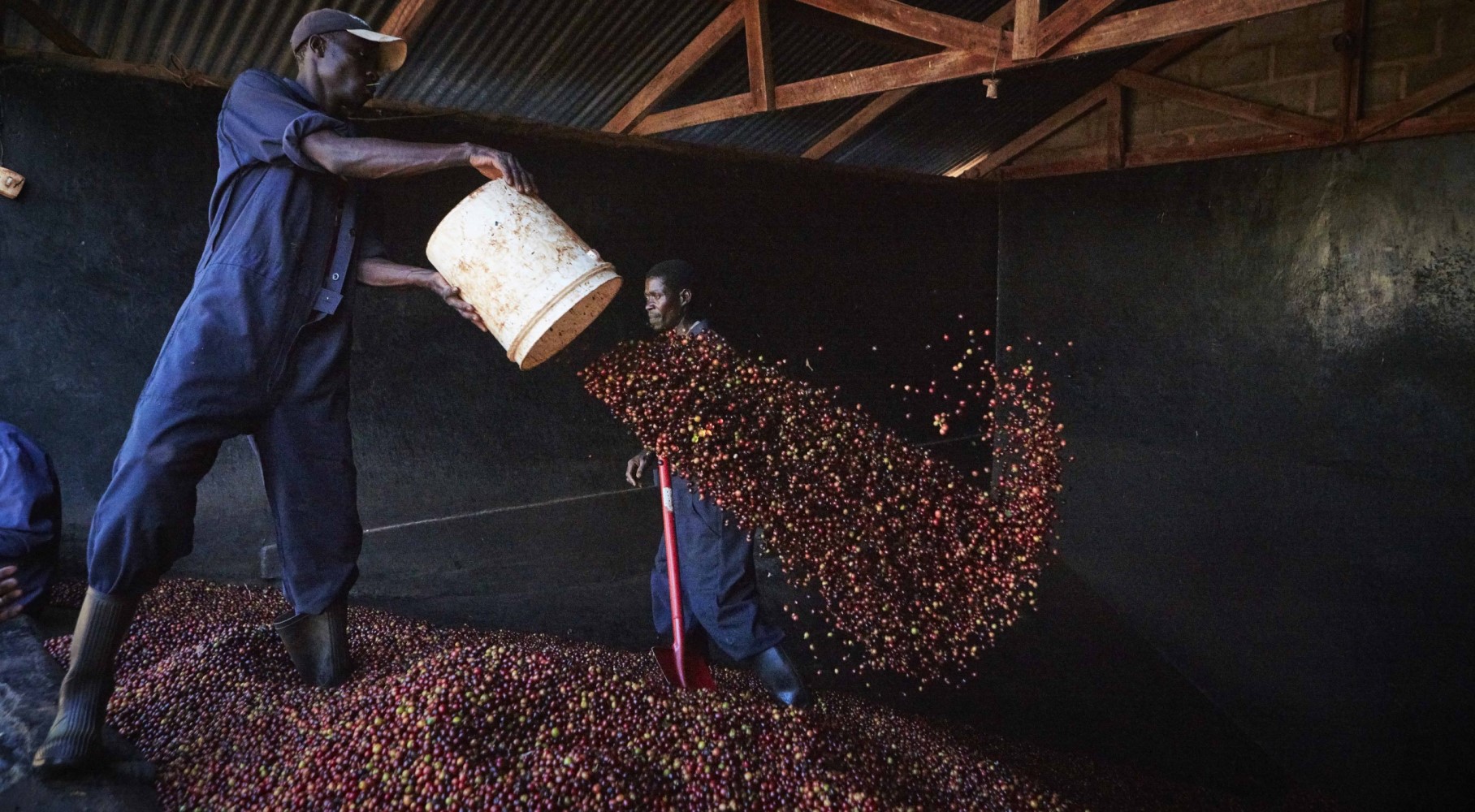
31 Aug The perfect late summer coffee: Kenya Karani AB
We always look forward to the summer when the fresh Kenya crop arrives in the roastery. Without fail they bring a fruit-forward blackcurrant boost to our coffee lineup, and this year is no exception. Light and sweet, with a complex body and subtle grapefruit brightness, the washed Kenya Karani AB is a stellar addition and we can’t wait for you to try it.
Up there with the most renowned coffee producing regions, Kenya is the world’s 16th largest grower and the fifth largest in Africa. The Karani Factory is located in Kirinyaga in the foothills of the extinct volcano Mt. Kenya, where 600 producers deliver their harvest to the washing station to be processed.
Collectively, the Karani Factory producers grow coffee on 134,000 trees in the lush red volcanic soil high in nutrients and organic matter. So much of the country’s production is located around Mt. Kenya’s base for this very reason, the volcanic soil providing the perfect growing medium for high quality coffee.
Harvest generally occurs amongst the cooperative members between October and December. Workers carefully monitor the coffee and pick only when the cherry is perfectly ripe. Picking takes place in the morning before the buckets of bright red coffee cherries are carried to the mill for processing.
Kenya’s coffee history, like so many producing countries around the world, is inextricably linked to colonialism. Although it shares a border with Ethiopia, the birthplace of coffee, the plant was only brought to Kenya by missionaries in the late 19th century. Under British colonial rule, coffee was concentrated on British-owned private estates and grown primarily for export. The Coffee Act of 1933 established a Kenyan Coffee Board, and in 1934 an auction system was created to centralise the sale of coffee, a system that is still in use today.
The Mau Mau rebellion of 1952-60, which led to the country’s eventual independence, provided the impetus to transfer control over coffee production from Britain to the Kenyan people. Since then a series of reforms has allowed Kenyan producers more control over their production, and the country’s research establishment has encouraged constant quality improvements.
Kenya’s grading system uses size as the primary indicator, with AA including the largest and AB the second largest beans. Of course there are many other factors involved in a coffee’s quality aside from bean size, and many now regard AB as a comparable, if not superior, grade.
Like so many other coffee regions around the world, Kenya is at serious risk from climate change. Coffee is a delicate plant and extremely susceptible to adverse climate events. Rising temperatures, lack of rain, and generally erratic weather patterns are causing devastation for many producers worldwide. The berry borer beetle and diseases such as coffee leaf rust have impacted Kenyan farms at ever higher altitudes.
As the planet heats, shrinking viable land for coffee growing is another issue. In Kenya and other East African countries such as Ethiopia, many farmers have had to move their farms further uphill in search of more stable conditions. Many have decided to switch to more reliable crops, or left farming altogether.
We’ve been buying coffee from Kenya for years, and visited this beautiful country in early 2020. It’s important for us to support the farmers who grow, harvest, and process the coffee we roast for you, and we will continue to do so.
It’s always exciting when we get to taste, roast, and develop a new Kenya, and this year’s example is just dazzling. Look out for that classic Ribena sweetness, and if you’re feeling daring we’ve found the Karani works really well as an espresso. Happy brewing!

